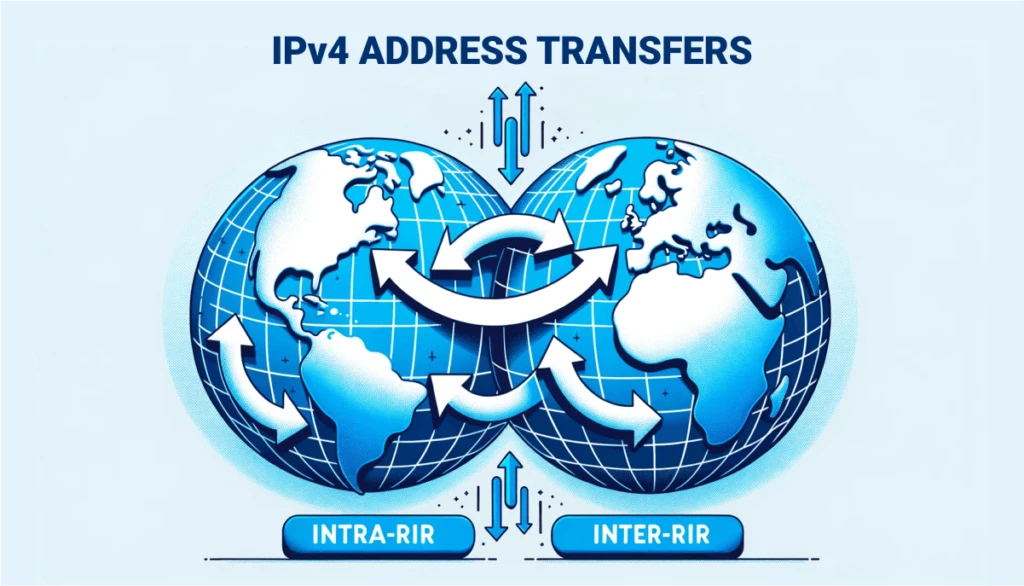The Latin American and Caribbean Internet Addresses Registry (LACNIC) is one of the five Regional Internet Registries (RIRs) responsible for the allocation of Internet number resources within its designated region. Established to serve Latin America and the Caribbean, LACNIC plays a pivotal role in ensuring the fair and equitable distribution of IP addresses, Autonomous System Numbers (ASN), and other vital internet resources. As an independent entity, LACNIC not only acts as a steward of these resources but also champions the values of transparency, collaboration, and community-driven governance.
Table of Contents
Key functions of LACNIC
LACNIC, as an RIR, has a multifaceted role that extends beyond mere allocation of IP addresses. Its functions are crucial for the seamless operation of the internet within its jurisdiction:
Resource allocation and administration
At its core, LACNIC is responsible for the assignment and administration of Internet numbering resources. This includes the distribution of both IPv4 and IPv6 addresses, as well as Autonomous System Numbers (ASN). These allocations are made based on community-agreed policies to ensure fairness and to prevent resource scarcity.
Policy development
LACNIC actively engages in the formulation, discussion, and implementation of policies that govern resource distribution and management. This process is community-driven, allowing stakeholders from across the region to have a say in how resources are managed.
Public registry maintenance
Transparency is a cornerstone of LACNIC’s operations. It maintains a public registry that details the resources assigned within its region. This registry is an invaluable tool for network operators and researchers alike.
Promotion of technological advancement
The internet is ever-evolving, and LACNIC is at the forefront of promoting technological innovation within its region. Through training programs, workshops, and other initiatives, LACNIC ensures that the regional internet community is equipped with the latest knowledge and best practices.
Global representation
LACNIC doesn’t operate in isolation. It represents the interests of the Latin American and Caribbean region in global internet governance forums. By actively participating in international discussions, LACNIC ensures that the voice of its community is heard on the global stage.
Community collaboration
Beyond its administrative functions, LACNIC is deeply committed to fostering collaboration within its community. It undertakes initiatives aimed at bridging the digital divide, promoting internet security, and ensuring the internet remains a tool for positive societal change.
People behind LACNIC
The success and efficiency of LACNIC can be attributed to its robust organizational structure, steered by dedicated professionals and community members. These individuals and groups ensure the seamless operation of LACNIC, upholding its values and objectives.
General Assembly
The General Assembly is the collective voice of all LACNIC members. It plays a pivotal role in the organization’s decision-making processes, including the election of the Board of Directors and the approval of key organizational policies.
Board of Directors
Comprising seven members elected by the General Assembly, the Board of Directors acts as the primary guiding force behind LACNIC. Their tenure lasts three years, with staggered terms to ensure continuity and stability. The board is responsible for making vital decisions, setting strategic directions, and overseeing the overall operation of LACNIC.
Advisory Council
The Advisory Council is instrumental in the policy development process. Comprising representatives from the broader community, the council reviews and deliberates on policy proposals, ensuring they align with the community’s needs and interests.
LACNIC staff
The day-to-day operations of LACNIC are managed by its dedicated staff. Led by an executive director, this team handles administrative tasks, member services, training programs, and more. The executive director also represents LACNIC in legal and formal capacities.
Formation of LACNIC
The inception of LACNIC was driven by the growing need for a dedicated Regional Internet Registry to serve the unique needs of the Latin American and Caribbean region. Its formation was a testament to the region’s commitment to self-governance and the decentralized management of Internet resources.
Timeline of LACNIC’s inception
- Late 1990s: The initial discussions about the need for a new RIR for Latin America and the Caribbean began. As the Internet expanded rapidly, stakeholders recognized the importance of localized governance over key Internet resources.
- September 1999: The proposal to establish LACNIC was formally presented at the RIPE-35 meeting in Amsterdam. This marked a significant step towards the realization of LACNIC.
- 2000-2002: The subsequent years saw meticulous planning by regional stakeholders. This involved negotiations with existing RIRs, the development of regional policies, infrastructure setup, and the establishment of legal and fiscal structures to support the new RIR.
- October 31, 2002: After fulfilling various criteria, including demonstrating operational capability, LACNIC received an official endorsement from ICANN.
- November 1, 2002: The very next day marked the beginning of the transition and transfer of registration services for the region from ARIN to LACNIC.
Key milestones in LACNIC’s history
LACNIC’s journey post-inception has been characterized by innovation, community engagement, and a commitment to serving the region’s Internet needs.
- 2009: LACNIC held its first Public Policy and Members Meeting. This event saw the institution of the Policy Development Process, ensuring a democratic approach to resource allocation and management policies.
- 2014: LACNIC reached the “exhaustion phase” of IPv4 addresses. This milestone underscored the importance of transitioning to IPv6 to support the region’s growing Internet needs.
- 2018: The LACNIC community introduced the “charge back” policy. This innovative approach allowed for the allocation of recovered Internet resources to new entities that had previously been excluded.
From its early discussions in the late 1990s to its current role as a key player in the region’s Internet landscape, LACNIC’s history is a testament to the power of regional collaboration and community-driven governance.
Geographical areas covered by LACNIC
LACNIC’s jurisdiction, as recognized by ICANN, spans a vast and diverse region. Its mandate covers both Latin America and the Caribbean, making it responsible for a wide array of countries and territories with varying levels of economic development, digital infrastructure, and Internet penetration rates.
Sovereign countries
Over 33 sovereign nations fall under LACNIC’s jurisdiction. This includes major countries like Argentina, Brazil, and Mexico, as well as smaller nations such as Antigua and Barbuda, Barbados, and Martinique.
Territories and dependencies
In addition to sovereign nations, LACNIC also oversees Internet resource allocation for over 15 territories and dependencies. These regions, while not fully sovereign, still require dedicated Internet resources and governance.
The Importance of LACNIC in Internet Management
LACNIC’s establishment was not just a bureaucratic decision; it was a strategic move to ensure that the Latin American and Caribbean region had a dedicated body to manage its unique Internet needs. Over the years, LACNIC has proven its indispensability in various facets of Internet governance and management.
Why LACNIC exists
The inception of LACNIC was a response to the need for a more localized control over the Internet’s critical resources. But its role goes beyond mere resource allocation:
Decentralized control
LACNIC brought the management of Internet resources closer to the local communities, ensuring that decisions affecting the region’s Internet landscape were made by those who understood its unique challenges and opportunities.
Promotion of digital inclusion
LACNIC is not just about numbers; it’s about people. Through its various initiatives, LACNIC strives to ensure that the benefits of the Internet reach every corner of its vast jurisdiction, bridging digital divides and fostering inclusivity.
Security and stability
In an era where cyber threats are ever-present, LACNIC plays a pivotal role in promoting the security and stability of the Internet in its region.
Influencing global internet governance
LACNIC’s voice resonates not just within its region but also on the global stage. It actively participates in international Internet governance forums, ensuring that the interests of its community are represented and protected.
Role of LACNIC in Internet Number Resources Allocation
Fair and transparent allocation
LACNIC ensures that Internet number resources, including both IPv4 and IPv6 addresses and ASNs, are allocated fairly and transparently, based on community-agreed policies.
Optimized resource management
By continuously refining its allocation mechanisms and policies, LACNIC ensures that the region’s Internet resources are used optimally, supporting continued growth and innovation.
Contribution of LACNIC to Internet Governance
LACNIC’s influence extends beyond its borders. As a key player in the global Internet community
Active participation in global forums
LACNIC ensures that the region’s voice is heard in international discussions on topics ranging from Internet regulation to digital rights.
Democratizing internet governance
By fostering an active and engaged regional community, LACNIC ensures that decisions affecting the Internet are made by a diverse group of stakeholders, truly embodying the principle of “by the community, for the community.”
Frequently Asked Questions
Why is LACNIC important to the internet structure?
LACNIC, as one of the five Regional Internet Registries (RIRs), plays an indispensable role in enabling the functionality of the Internet. LACNIC helps manage the limited Internet number resources, working diligently to ensure fair and efficient distribution of IP addresses and ASNs throughout the Latin American and Caribbean region. Its mission impacts millions of web users, influencing the region’s digital accessibility, economic development, digital inclusion policies, and much more.
How does LACNIC contribute to the global internet community?
LACNIC contributes significantly to the global internet community by being a steward of resources and a voice advocating the best interests of its regional Internet community. By managing and dispensing Internet number resources within the region, it facilitates the smooth operation of the Internet on a global scale. Moreover, LACNIC’s representational role at international Internet governance forums aids in shaping policies impacting the worldwide Internet ecosystem.
What is the role of regional registries like LACNIC in IP address management?
Regional Internet Registries (RIRs) like LACNIC are responsible for managing, distributing, and registering IPv4 and IPv6 addresses, as well as ASNs within assigned regions. They ensure that these resources are allocated in a manner that is equitable, transparent, and in accord with policies framed by their respective Internet communities. They also maintain registration records necessary for network operations.
What is the geographic area covered by LACNIC?
LACNIC covers Latin America and parts of the Caribbean. Its jurisdiction spans a region that houses more than 33 sovereign countries and 15 dependent territories, making it one of the most diverse RIRs in terms of geographical and cultural representation.
How does the policy development process work at LACNIC?
The Policy Development Process at LACNIC is primarily community-driven. It is an open and transparent mechanism allowing any interested individual or organization to propose changes to policies governing Internet number resources management. The proposal gets aired for public discussion and review, and if consensus is achieved in the Advisory Council, the suggested policy alteration is forwarded to the Board of Directors for ratification. The design of this process promotes inclusivity and participation, reinforcing the principle of collective decision-making.
What is LACNIC IPv4 Address Waitlist?
The LACNIC IPv4 Address Waitlist is a system introduced by LACNIC (Latin America and Caribbean Network Information Centre) to orderly distribute the remaining IPv4 addresses to requesting organizations after the last available block was allocated in August 2020. Eligible organizations are queued on a first-come, first-served basis.





